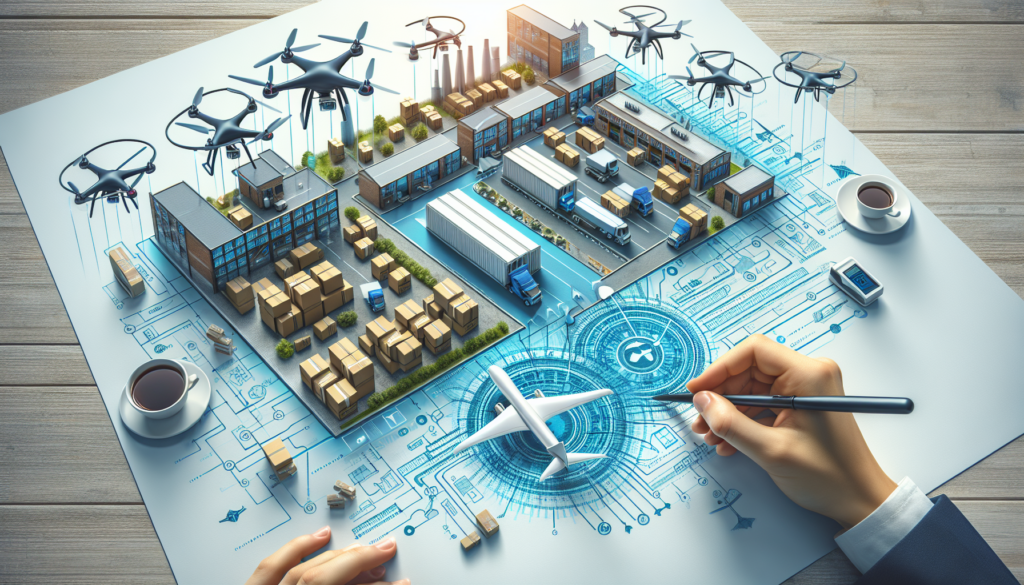Drones, formally known as unmanned aerial vehicles (UAVs), have emerged as a transformative tool within the vast domain of logistics and supply chain management. The deployment of drones is redefining traditional operations in these sectors, not only speeding up delivery processes but also enhancing efficiency and reducing operational costs. Here is an exploration of how these devices are altering the logistics landscape from their conceptualization to contemporary applications and future prospects.
Foundational Theory and Technical Innovations
In the realm of UAVs, it is critical to understand the technology underpinning their operation. Drones employ a blend of advanced navigation technologies, like GPS or visual navigation, real-time communication systems, and artificial intelligence algorithms for data processing and autonomous decision-making. These technological components enable drones to perform accurate and safe deliveries, and allow them to dynamically react to changing environments.
Recent advancements in payload capacity and flight autonomy have increased the value of UAVs in the supply chain. The development of longer-lasting batteries and the reduction in device weight have significantly contributed to their commercial viability. Additionally, obstacle detection and avoidance technology are rapidly progressing, which is crucial for ensuring the safety of drones in congested airspace.
Applications and Operational Efficiency
The introduction of drones into logistics has unveiled a variety of innovative applications that transform supply chain operations. For instance, in rural or remote areas where ground infrastructure is limited, drones provide an efficient and low-cost alternative for quick deliveries. At the same time, in densely populated urban areas, they offer a solution for bypassing congestion and increasing the speed of last-mile deliveries.
Within the supply chain, drones are not only limited to delivering packages to the end consumer. They are being implemented for transferring inventory between warehouses and for tracking goods in transit, using advanced imaging capabilities and data analytics to generate real-time visibility into the status of products.
Relevant Case Studies
To illustrate these applications, there are a variety of case studies demonstrating the impact of UAVs on logistics. Companies like Amazon have trialed package delivery via drones through their Prime Air service. On the other hand, UPS and other logistics operators are exploring how drones can complement traditional deliveries, especially for the urgent transport of medical products and other critical supplies.
Sustainability and Regulatory Considerations
The adoption of drones in logistics operations offers advantages not only in terms of efficiency and cost but also from a sustainability perspective. Electric drones reduce the carbon footprint associated with deliveries, positively impacting corporate sustainability initiatives.
However, a crucial consideration in the expansion of drone use is air regulation. Regulations vary significantly between countries and regions and are constantly evolving to accommodate changes brought about by this technology. Current regulations address issues such as weight and altitude limits for flying, as well as the necessity to keep the drone within the operator’s line of sight, although this point is shifting with the advancement of autonomous flight technology.
Future Directions and Technological Limitations
Looking ahead, the integration of UAVs into global logistics is anticipated to accelerate with technological progress. Drones could potentially incorporate emerging technologies such as 5G for improved communication, collaborate with ground robots and autonomous vehicles for multimodal deliveries, and leverage artificial intelligence to enhance their autonomous decision-making capabilities and handle unexpected situations.
Despite these optimistic prospects, there are technical limitations that need to be addressed. Challenges include improving the drones’ resilience to adverse weather conditions, increasing their range and payload capacity, and managing air traffic to prevent interference and collisions between UAVs and manned aircraft.
Drones represent a disruptive element that continues to raise the bar in the logistics field and promises to redesign the way supply chains are understood and managed in the future. As these technologies advance and solutions to regulatory and technical challenges are found, a new era in the delivery and management of goods around the world is foreseen.

